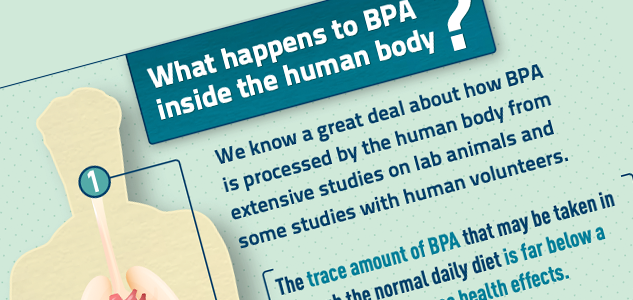Additional Resources
BPA Is Clearly Safe, and Here’s How We Know
Earlier this year, the results of the Consortium Linking Academic and Regulatory Insights on BPA Toxicity (CLARITY) Core study – a scientific study of unprecedented scope and magnitude – were released. If you have any interest in BPA, whether you’re concerned about its safety or not, you need to know about the results of this multi-year and multi-million dollar study.
The CLARITY Study
CLARITY is a multipronged U.S. federal government research program designed to assess the potential health effects of long-term exposure to BPA. The key element of the program — the core study — is the largest study every conducted on BPA and has been undertaken by expert scientists at a U.S. Food and Drug Administration (FDA) laboratory.
About BPA
Bisphenol A (BPA) is used to make plastics and resins that are essential to many consumer and industrial products for modern living, including many applications important to public health and food safety. BPA is one of the most thoroughly tested chemicals used today and has a safety track record of 50 years.
About BPA: Polycarbonate Plastic
Used in many consumer and industrial products, polycarbonate plastic made with bisphenol A (BPA) is a shatter-resistant, lightweight, high-performance plastic with toughness, optical clarity, high heat resistance and excellent electrical resistance.
About BPA: Epoxy Resins
Epoxy resins, most of which are made from bisphenol A (BPA), are essential to modern life, public health, efficient manufacturing and food safety. They are used in a wide array of consumer and industrial applications because of their toughness, strong adhesion, chemical resistance and other specialized properties.
Where in the World Are You Safe From BPA?
Are alarming media reports true, or are we safe from BPA Exposure? A recent peer-reviewed study published in the scientific journal Environmental Pollution gathered data from prior research on human exposure to BPA and answers this question.
Your Summer and BPA: Get the Facts
Did you know bisphenol A, commonly known as BPA, is in many of the summertime products we love? Download the infographic to learn why BPA is an important component of many common products we use during the summer.
Weight of Scientific Evidence Supports the Safety of BPA
Government and scientific bodies around the globe have extensively evaluated the weight of scientific evidence on bisphenol A (BPA) and have declared that BPA is safe as used, including in materials that come into contact with food, such as reusable food-storage containers and linings in metal cans.
What Does U.S. Government Research Tell Us About BPA?
Based on government research, along with results from other studies, the U.S. Food and Drug Administration (FDA) recently answered the question
“Is BPA Safe?” with a clear answer – “Yes.”
FDA Answers Key Questions about BPA Safety
Government and scientific bodies worldwide have weighed the scientific evidence and concluded that BPA is safe as used. Nevertheless, BPA has been the subject of controversy for many years because of claims that it has the potential to cause adverse health effects. Such claims led the U.S. Food and Drug Administration (FDA) to fund and conduct an in-depth research program on BPA. So far, the results of the research provide strong support for the safety of BPA.
Why Replace BPA?
It’s no secret that bisphenol A (BPA) has been controversial for quite some time and has received intense scrutiny from scientists, government agencies, the media and environmental groups. Such scrutiny has resulted in demand from consumers for alternatives to products that contain BPA, and hasty efforts from some manufacturers to provide “BPA-Free” products. While the controversy surrounding BPA may be interesting and important, the controversy by itself does not provide an answer to the key question addressed in this article: Why replace BPA?













